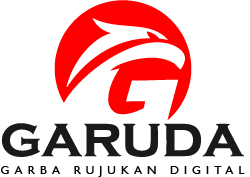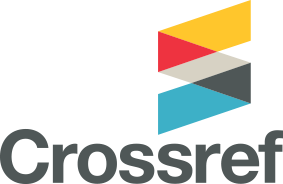Tension Band Wiring for Chronic Acromioclavicular Joint Dislocations Rockwood Type III/ISAKOS Type IIIB
Abstract
Acromioclavicular joint (ACJ) dislocations account for 10% of shoulder injuries, with Rockwood type III being the most common. Despite its prevalence, there is no consensus regarding a gold standard surgical treatment for chronic ACJ dislocations. tients often delay seeking medical attention during the chronic phase, during which soft tissue healing capacity significantly declines. A 30-year-old male presented with persistent shoulder pain and restricted elevation two months after a motorcycle accident. The patient initially sought alternative treatment, later developed chronic pain and an inability to elevate the shoulder. Physical and radiograph examinations revealed a Rockwood type III ACJ dislocation. After treatment with the tension band wiring (TBW) technique, functional outcomes were assessed using the Disabilities of The Arm, Shoulder and Hand (DASH) and Constant scores. The Constant score improved from 61 to 92 and while the DASH score decreased from 45 to 5 in 3 months and 2 weeks post-operation. International Society of Arthroscopy, Knee Surgery and Orthopaedic Sports Medicine (ISAKOS) subdivided Rockwood Type III injuries into IIIA (stable) and IIIB (unstable), with type IIIB requiring surgical treatment. Several studies suggested that mechanical stabilization with biological augmentation is sufficient in neglected cases. However, this technique is expensive and required specialized skill and expertise in shoulder arthroscopy. To overcome this challenge, TBW has emerged as a cost-effective and straightforward surgical technique that enables faster rehabilitation and provides a stable, pain-free shoulder without postoperative complications. It may serve as a viable treatment option, particularly in resource-limited or rural settings.
Keywords
Acromioclavicular joint, rockwood, tension band wiring
Full Text:
PDFReferences
- Nordin JS, Olsson O, Lunsjö K. Acromioclavicular joint dislocations: incidence, injury profile, and patient characteristics from a prospective case series. JSES Int. 2020;4(2):246–50. doi:10.1016/j.jseint.2020.01.012
- Chernchujit B, Artha A. High grade acromioclavicular injury: Comparison of arthroscopic assisted acromioclavicular joint fixation and anatomic acromioclavicular joint reconstruction. J Orthop. 2020;22:151–7. doi:10.1016/j.jor.2020.04.007
- Ozan F, Gök S, Okur KT, Altun İ, Kahraman M, Günay AE, et al. Midterm Results of Tension Band Wiring Technique for Acute Rockwood Type III Acromioclavicular Joint Dislocation. Cureus. 2020;12(12):1-7. doi:10.7759/cureus.12203
- Lateur G, Boudissa M, Rubens-Duval B, Mader R, Rouchy RC, Pailhé R, et al. Long-term outcomes of tension band wiring with a single K-wire in Rockwood type IV/V acute acromio-clavicular dislocations: 25 cases. Orthop Traumatol Surg Res. 2016;102(5):589-93. doi:10.1016/j.otsr.2016.02.016.
- Sunil S, Venkatesh V. Management of type 2 & type 3 acromio-clavicular joint injuries by principles of tension band wiring. Indian J Orthop Surg. 2020;6(3):175–81.
- Maher N, Holdsworth J, Fogerty SJ. Acromioclavicular joint injuries: a review of pathoanatomy, assessment and current management approaches. Orthopaedics and Trauma. 2023;37(5):285–9.
- Ranne JO, Kainonen TU, Lehtinen JT, Kanto KJ, Vastamäki HA, Kukkonen MK, et al. Arthroscopic coracoclavicular ligament reconstruction of chronic acromioclavicular dislocations using autogenous semitendinosus graft: a two-year follow-up study of 58 patients. Arthrosc Sports Med Rehabil. 2020;2(1):e7-e15. doi:10.1016/j.asmr.2019.10.002.
- Martetschläger F, Kraus N, Scheibel M, Streich J, Venjakob A, Maier D. Diagnostik und Therapie der akuten Luxation des Acromioclaviculargelenks. Deutsches Arzteblatt International. 2019;116(6):89–95.
- Jambukeswaran PST, Senthilnathan A, Prabhakar R. Comparison Between Two Surgical Techniques: Acromioclavicular Tension Band Wiring and Acromioclavicular Screw Fixation in Acromioclavicular Dislocations. J Int Modn. Res. Revs. 2016;4(11):1388-91
- Thompson JC. Netter atlas of human anatomy. 8th ed. Philadelphia: Saunders; 2022.
- Apley AG, Solomon L. System of orthopaedics and trauma. 10th ed. New York: Taylor & Francis Group; 2018.
- Via RG, Bosco F, Giustra F, Lavia AD, Artiaco S, Risitano S, et al. Acute rockwood type III ACJ dislocation: Conservative vs surgical approach. A systematic review and meta-analysis of current concepts in literature. Injury. 2022;53(10):3094-3101. doi:10.1016/j.injury.2022.07.050.
- Saade F, Carminati F, Bouteille C, Lustig JP, El Rifaï S, Boyer E, et al. Acromioclavicular joint separation: Retrospective study of non-operative and surgical treatment in 38 patients with grade III or higher injuries and a minimum follow-up of 1 year. Orthop Traumatol Surg Res. 2023;109(4):103405. doi:10.1016/j.otsr.2022.103405
- Barth J, Duparc F, Andrieu K, Duport M, Toussaint B, Bertiaux S, et al. Is coracoclavicular stabilisation alone sufficient for the endoscopic treatment of severe acromioclavicular joint dislocation (Rockwood types III, IV, and V)? Orthop Traumatol Surg Res. 2015;101(8 Suppl):S297-S303. doi:10.1016/j.otsr.2015.09.003.
- Muthukumar K, Jambukeswaran P, Sathish Kumar T. Is tension band wiring a gold standard method in management of acromioclavicular injuries: a prospective study. Nat J Clin Orthop. 2017;1(2):5–9.
- Sumarwoto T, Hadinoto SA, Pradhana AI. Functional outcome by evaluation of DASH score on drop hand patient treated with Jones’ tendon transfer: a retrospective study. Joints. 2020;10(2):39–45.
- Ziegler P, Kühle L, Stöckle U, Wintermeyer E, Stollhof EL, Ihle C, et al. Evaluation of the Constant score: which is the method to assess the objective strength?. BMC Musculoskelet Disord. 2019;20(1):403. doi:10.1186/s12891-019-2795-6
DOI: https://doi.org/10.15395/mkb.v57.4165
Article Metrics
Abstract view : 203 timesPDF - 57 times

This work is licensed under a Creative Commons Attribution-NonCommercial 4.0 International License.

MKB is licensed under a Creative Commons Attribution-NonCommercial 4.0 International License
View My Stats







